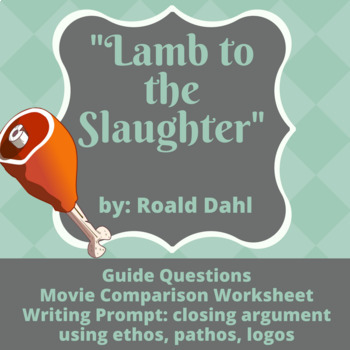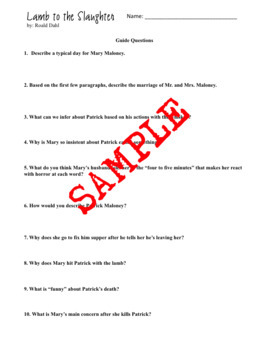Lamb to the Slaughter: Ethos, Pathos, and Logos
- Zip
Description
*Updated 10/12/20: For each worksheet, I’ve created a png image of the worksheet and then put that image as the background in a Google Slide. The students can use all of the tools in Slides to mark their answers. The links are already set up to force students to make a copy so they each have their own version of the worksheet in their Google Drive.
Copy and paste the links below to share with your students. Please don’t post these links on any websites that are not password protected.
A whole new take on the short story, "Lamb to the Slaughter."
Here, students will read the story and answer guiding questions that focus on inference, character motivation, and dramatic irony. There is also a worksheet on characterizing Mary and Patrick; students find supporting quotes and evidence from the text for each character trait they identify. There is a quick movie comparison worksheet if you want to show the Alfred Hitchcock movie adaptation of the story. You can find the movie version on SchoolTube.com.
My students love the story, but they really love the writing/speaking assignment to go with it.
After briefly teaching ethos, pathos, and logos (quick PPT included) students find examples of each in magazine ads (magazines not included due to logistics, but any magazine will work). Students then find examples of ethos, pathos, and logos in a transcript of closing arguments of episode 17:22 ("The Family Hour") of Law & Order.
*This clip is not available online and must be purchased for $1.99 from Amazon Prime. I have lowered the price $4.00 to make this adjustment.*
Students analyze which appeal is the most effective and why, and how the added visuals with the characters create more of an emotional argument.
Next, students apply what they learned to write out their own closing argument where Mary Maloney is on trial for the murder of Patrick. Students either defend Mary by pleading temporary insanity or fight for justice and claim she was of sound mind during the murder.
If you have enough time, have students volunteer to act out their closing arguments and go up against one another to see if they can persuade the jury (their classmates) to side with their argument.





